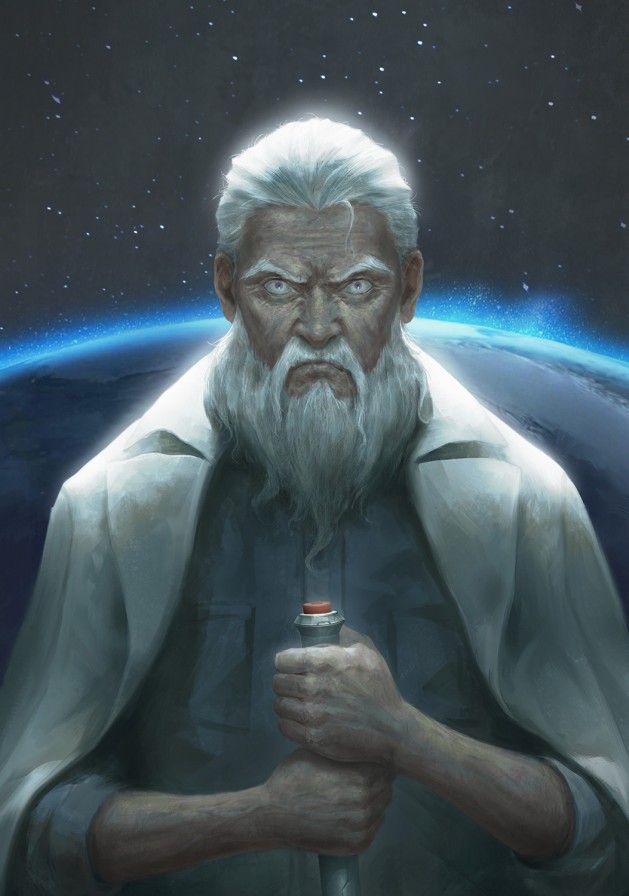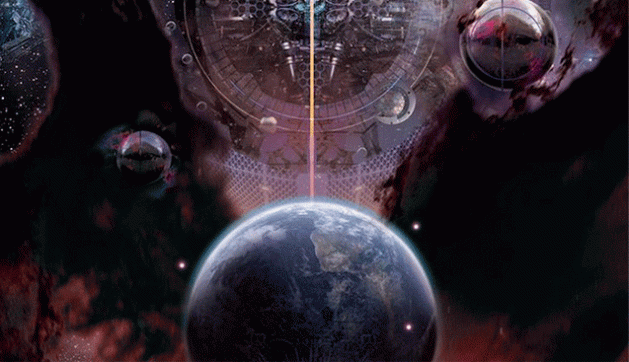A few days ago, the Marine Corps released a progress report on their Force Design 2030 effort. The report describes itself as being “Phase II” of a four-phase plan, with Phase I being problem framing. This phase produced a number of recommendations which will be analyzed (Phase III) and then refined and implemented (Phase IV). Force Design 2030 describes how the USMC will organize and equip itself based on the US National Defense Strategy (NDS). The Commandant’s specific guidance is given on Page 3 of the linked document, but the general thrust of the redesign is de-prioritizing maneuver warfare and occupation (the defense establishment prefers the term “wide area security” for the latter, FYI) in favor of a littoral operations in support of maritime operations, especially in the “Indo-Pacific” i.e. against China.
The proposals in the document, while not final, are very sensible conclusions given the prioritization of littoral operations and the fact that
“We must acknowledge the impacts of proliferated precision long-range fires, mines, and other smart weapons, and seek innovative ways to overcome these threat capabilities.”
General David h. berger, commandant usmc
The overall major changes are a reduction in the number of infantry units with a concomitant reduction in support assets, the elimination of tanks and law enforcement battalions, and a drastic reduction of tube in favor of rocket artillery with anti-shipping missile apparently an important capability of the latter.
Infantry Reductions
The document calls for the elimination (“divestment”) of one regiment of three battalions of active duty infantry and the elimination of two battalions of reserve infantry (presumably one from each reserve regiment, and even more presumably the “24th Regiment” battalions). This resulted from removal of the requirement to field two Marine Expeditionary Units (MEUs) for joint forced entry i.e. a major conflict with a peer country. Infantry is, obviously, the core capability of the USMC and such reduction could not have been done lightly. Further, the size of current battalions might be shrunk somewhat.
If any of the proposed force reductions don’t stick through the analysis in Phase III, I would expect it to be this one. However, with focus moving away from maneuver warfare and occupation, and given the removal of the 2x MEU — the restoration of which would probably require an unforeseen budget increase — the most likely reason for needing more infantry that the Phase III analysis reveals higher than anticipated losses in likely scenarios. The document (correctly and appropriately) considers “attrition” inevitable in any serious conflict, so the planners have this problem in mind:
There is no avoiding attrition. In contingency operations against peer adversaries, we will lose aircraft, ships, ground tactical vehicles, and personnel. Force resilience – the ability of a force to absorb loss and continue to operate decisively – is critical.
This would probably affect the size rather than number of battalions, however. The current number of battalions is based on the 2x MEU requirement and won’t be kept without it.
Likewise, Force Design 2030 proposes a reduction in both lift aviation and assault amphibious units. Again, the current structure derives from the 2x MEU requirement, and eliminating it reduces the need for these assets.
Combat Aviation
Puzzling out the thinking behind FD2030 proposals regarding combat aviation is a little more difficult, which perhaps indicates that these proposals are more tentative. On the elimination of several attack helicopter squadrons it says that
While this capability has a certain amount of relevance
to crisis and contingency missions which we must still be
prepared to execute, it is operationally unsuitable for our
highest-priority maritime challenges and excess to our
needs with the divestment of three infantry battalions.
The AH-1Z’s limited range and station time, and vulnerability to low-altitude air defenses account for this “unsuitability”. Perhaps the USMC intends to replace its strike capability with more persistent (and expendable) UAS — FD2030 will double the number of Marine UAS squadrons — and less vulnerable surface fires, provided both by the Navy and by the greatly expanded rocket artillery capability.
And then there is the F-35. FD2030 proposes reducing the number of aircraft in each VMFA (fighter/attack squadron) to 10 without reducing the number of squadrons.

Currently VMFAs operate either the F/A-18C, the F-35B, or the F-35C with 12, 16, or 10 aircraft each, respectively. FD2030 proposes that all of these squadrons operate 10 aircraft each. Why? The easy answer is money. But two other difficulties are mentioned. First,
I am not convinced that we have a clear understanding
usmc commandant
yet of F-35 capacity requirements for the future
force. As a result, the Service will seek at least one external assessment of our Aviation Plan relative to NDS objectives and evolving naval and joint warfighting concepts.
The F-35B is the most advanced STOVL aircraft in existence by a long shot, and has far greater capability than the AV-8 Harrier it replaces. The fleet carrier-based F-35C is probably a more incremental upgrade over the Super Hornet. Both aircraft are the expensive high-tech results of a lengthy development process, and the Marines are to some extent stuck with them whether they want them or not. Their capabilities and limitations compared to previous airframes are the most arcane input factors into FD2030, and the quoted section strongly suggests that the USMC planners simply could not determine (or at least agree) on how to use them without outside input.
The other problem, noted immediately afterward, is a shortage of pilots. This problem is not limited to the Marines. My understanding is that it is more an issue of retention than of recruitment (“FLY FIGHTER JETS” is not a hard sell to prospects, but reality of the lifestyle is apparently less attractive). Regardless, if the limiting factor is pilots rather than airframes — and, maybe, if the F-35 has a lower operational readiness rate than previous aircraft — it might make sense to lower the pilot:airframe ratio. This is assuming the USMC takes delivery of the same number of F-35Bs as currently planned, which I believe it will (must). On the other hand, is pilot retention really something that can’t be fixed in ten years?
Tanks & Howitzers (and cops)
FD2030 recommends a drastic reduction in Marine tube artillery, from 21 batteries to only five. The Marines use towed 155mm howitzers (M777 as far as I know). Increases in rocket artillery will compensate for this, as discussed below. I see this as a logical course of action for a service no longer concerned with maneuver warfare and occupation (no suppressing fires in support of maneuver, no “firebases”). The current structure of, more or less, one howitzer battery per infantry battalion is obviously being completely scrapped.
The complete elimination of Marine tanks is significant but unsurprising, and the right decision. The heavy, fuel-guzzling Abrams tank is frankly something the Marines were saddled with by Army requirements. The Abrams’ inability to swim probably accounts in no small part for the existence of the USMC’s bridging assets (which FD2030 proposes to eliminate). For an amphibious force which needs to carefully consider every ton of materiel moved ashore, the weight to capability ratio of the Abrams was always dubious.

In the littoral/maritime environment emphasized by the Commandant, the Abrams would be an extremely niche capability. There’s a certain economy of scale to running tanks, like with most other things: if you have even one tank, you need an M88, specially trained mechanics, crew training programs, replacement parts, etc. (The USMC have also run their own independent Abrams development program rather than piggybacking on the Army, for budget reasons.) In the Marines, this has been done in the tank battalions, which don’t fight independently as the Army’s armored battalions have in the past but instead parcel out their tanks to expeditionary units, usually at the platoon level. If the USMC needs tanks for some particular mission in the future, they can do the same thing that JSOC does and borrow them from the regular Army.
FD2030 also proposes getting rid of the Law Enforcement Battalions. Sure.
Rocket Artillery and Anti-Ship Missiles
FD2030 recommends adding 14 additional rocket artillery batteries. The document mentions the “finders and hiders” problem in the context of proliferated long-range precision munitions (roughly the same thing as what I think of as the “sensors and dispensers” mode of warfare). The maxim of this problem is: if it can be seen it can be hit; if it can be hit, it can be killed. So: don’t be seen. Rocket artillery, presumably using mostly guided munitions, offer superior range and single-munition payload to howitzers. However, there is another, more intriguing aspect to the USMC’s bet on rocket artillery: shore-launcher anti-ship missiles (ASM). Whatever the relative merits of cannon cockers vs rocket jockeys, it is the anti-ship capability that appears to drive this proposal:
This investment [rocket artillery] provides the basis, over time, for generating one of the fundamental requirements for deterrence, and ultimately successful naval campaigns – long-range, precision expeditionary anti-ship missile
fires. This requirement is based on one of the more well-supported conclusions from wargaming analysis conducted to date.
This is a very new direction for both the Marines and the US in general. The Navy, for instance, has resolutely held on to the aging Harpoon ASM even as competitors developed several iterations of more capable missiles. As far as I know, the US has never fielded shore-based anti-ship missiles outside of test ranges, although they have provided them to other countries.

Clearly the Marines & Navy want shore-based missiles to defend forward bases without having to completely rely on seagoing vessels. Development of the AGM-158C LRASM and some other capabilities has made this clear for some time. More interesting is the idea of Marine detachments being quickly deployed onto coastlines and islands in order to contribute land-based ASM launches to naval surface warfare plans. FD2030 also recommends expanding air-defense capabilities, which would support both of these activities. I would expect to see future fleet exercise incorporate these tactics for evaluation, since FD2030 sounds very confident about the simulation/wargame results. Indeed there have already been some rapid deployment exercises of Marine HIMARS in the Pacific.

Unmanned Systems
As mentioned above, the FD2030 recommends doubling the number of UAS squadrons in the USMC. The document refers to these as being either for “collection” or “lethal” activities — intelligence and attack. However, Gen. Berger also wrote that
I am not confident that we have identified the additional structure required to provide the tactical maneuver and logistical sustainment needed to execute [operations] in contested littoral environments against our pacing threat [i.e. China]. While not an afterthought by any means, I do not believe our Phase I and II efforts gave logistics sufficient attention. Resolving these two areas must be a priority for Phase III.
I suspect, but it is only a suspicion, that the Marines may be looking into the possibility of using unmanned or at least heavily automated systems for at least some ship-to-shore logistics. This would be an even bigger innovation than developing a coastal ASM capability (which plenty of other militaries have already done). I do not think that land logistics will prove particularly amenable to this sort of automation (basically, there is a trend of lines of communication requiring more and more security) but this may not apply to amphibious movement.
Conclusions
Force Design 2030 indicates that the Marines have a coherent general vision of what sort of conflict they want to prepare for (Pacific, maritime/littoral) and are taking reasonable steps to restructure their force to fight for this conflict. They are eliminating redundant capacity with the Army, adding new capability suited to the intended fight, and modestly reducing the overall size of their force in expectation of only having to fight one major conflict at a time.


![The-Light-of-Other-Days-2834606[1]](https://i0.wp.com/sfoil.net/wp-content/uploads/2018/10/the-light-of-other-days-28346061.jpg?resize=250%2C250&ssl=1)



![{D24B5807-7660-4EBE-88C7-F8C9EB86A8F6}Img400[1]](https://sfoil.files.wordpress.com/2018/04/d24b5807-7660-4ebe-88c7-f8c9eb86a8f6img4001.jpg?resize=300%2C400)
